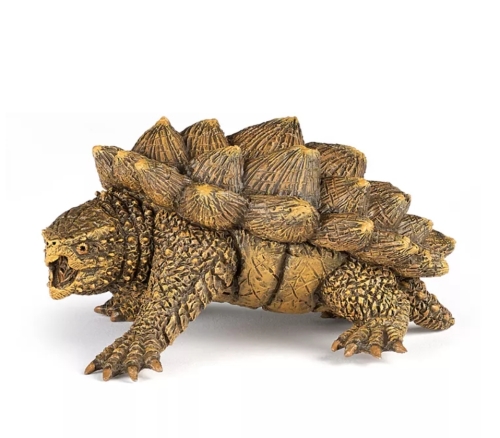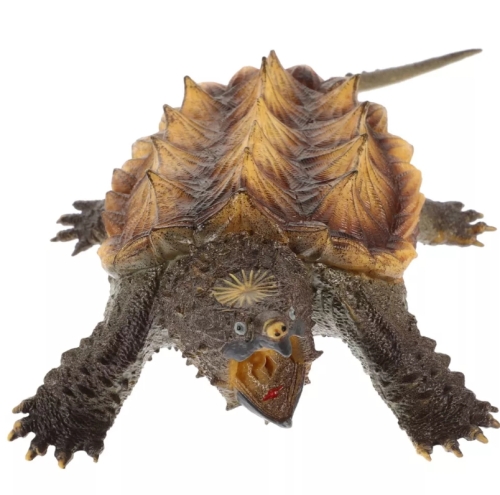Snapping turtle model is an important biological model, which is widely used in ecology, evolutionary biology and environmental science. Snapping turtle with its unique biological characteristics and adaptability, provide abundant data for the study. They live in a variety of environments, from freshwater rivers to swamps, demonstrating the ability to adapt to a variety of ecosystems.
In biological taxonomy, snapping turtle belongs to the reptile, its appearance characteristics are more unique, the back armor hard and special shape, showing an obvious sense of armor. Their physiology is also well adapted to their environment, such as the snapping turtle's ability to breathe through the skin and survive in oxygen-deprived waters. And their slow metabolic rate allows them to maintain life activities for a long time in the absence of food.
Snapping turtles are mainly carnivorous, feeding on fish, crustaceans and some aquatic plants. In the ecosystem, they play an important role as predators, helping to regulate the population dynamics of organisms within their habitat. In terms of reproduction, snapping turtles usually mate in the spring, the eggs in their ovaries mature for a long time, and the spawning season is often relatively concentrated, which is closely related to its ecological adaptability.
By studying the habits and physiological characteristics of snapping turtles, researchers can gain insight into biodiversity, species evolution, and ecosystem interactions. Especially in the face of environmental problems such as climate change and habitat destruction, the survival status of snapping turtles can reflect the health of the ecological environment. Therefore, snapping turtle models are not only an important tool for biological research, but also an effective indicator species for ecological monitoring and conservation.
















